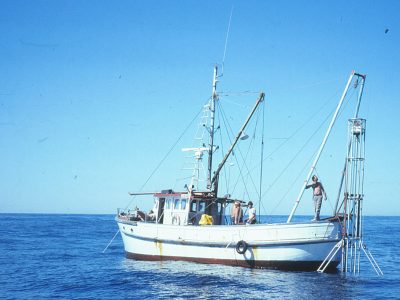Andy Short and Rob Brander have collected a set of stories from around the world under the heading “Stories from the Field 50 Years of Coastal Fieldwork: 1970-2020”. Editors of JCR should be congratulated in allowing these two Australian guest editors to reach out to so many of us who over this period have undertaken coastal field studies, and for making the stories freely accessible online. The product is not the usual research paper, but a unique assemblage of behind-the-scenes experiences in the joys and creativity of fieldwork. Andy and Rob have done us all a great service in bringing this volume together.
One of the first things that struck me in opening the volume was the broad scope of interests represented by each of the relatively short papers. I counted 78 papers plus notes introducing each decade. All continents are represented. The stories are supported by photos and references which makes this collection an extraordinary dossier of materials on how research is done. But, in addition, it documents how methods of field study have evolved and thus offers an historical insight into coastal science. It captures both the time and the place where experiments were conducted using different techniques, where observations of a more general type were generated, and where insights were obtained from a diverse array of coastal environments. As such it offers a collection of papers that should be read by all present and future students interested in a career in coastal science.
It is a volume full of “incidents”. Application of techniques available at the time whether on land or from the water highlight the capacity of fieldworkers to get into trouble. Some stories define the capacity of those involved to extract themselves from awkward situations, what may be referred to as times of thrills and spills. There are examples of pushing the proverbial envelop in applying “latest” electronic methods that were not designed for the stresses of coastal dynamics. And there are examples of injuries or near misses in undertaking fieldwork. Risks were taken and opportunities grabbed and some incredible results emerged that get documented here. Importantly there is recognition in text and in photos of field assistants without which much of this work could not have been accomplished. Yet it also demonstrates a time when working in the field was less controlled by those “masters” of occupational health and safety that today may place serious impediments on what can or cannot be done in field studies.
On the personal front, I was delighted to be included in this volume as my story was pre-1970. I am not sure why the editors permitted stories from Ed Owens and me from the 1960s, but I am grateful. In both cases, it gave us opportunities to comment on experiences we had in quite contrasting places at that time. It was also fascinating to see photos from Andy and others of colleagues whom I have been associated with over the years some of whom are sadly no longer with us to see this volume.
Again, many thanks Andy and Rob—well done.
Bruce Thom
Words by Prof Bruce Thom. Please respect the author’s thoughts and reference appropriately: (c) ACS, 2021. For correspondence about this blog post please email austcoastsoc@gmail.com
#181

